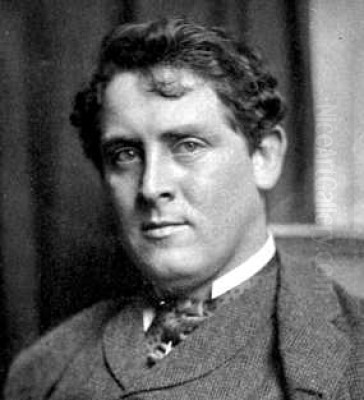
Julian Alden Weir stands as a pivotal figure in the story of American art, particularly renowned for his contributions to the Impressionist movement in the United States. Born into an artistic family and trained in both America and Europe, Weir's journey reflects the broader transitions occurring in the art world during the late 19th and early 20th centuries. His work, characterized by a subtle handling of light and color, captures the landscapes and intimate moments of American life, while his active participation in key art organizations shaped the course of artistic development in his time.
Early Life and Artistic Foundations
Julian Alden Weir was born on August 30, 1852, in West Point, New York. His upbringing was steeped in art; his father, Robert W. Weir, was a respected painter and served as the drawing instructor at the United States Military Academy at West Point for over four decades. This environment provided Julian with early exposure to artistic principles and practices. His older half-brother, John Ferguson Weir, also became a prominent painter and notably served as the first director of the Yale University School of Fine Arts. This familial connection to the arts undoubtedly nurtured Julian's own burgeoning talent and ambitions.
Weir's formal art education began domestically. Around 1867-1868, he commenced studies at the prestigious National Academy of Design in New York City. Here, he received rigorous training grounded in the academic traditions prevalent at the time, focusing on drawing, composition, and classical techniques. This foundational education provided him with the technical skills that would underpin his later, more experimental work. His time at the Academy placed him within the mainstream of the American art establishment of the era.
Parisian Studies and European Influences
Seeking to further refine his skills and broaden his artistic horizons, Weir traveled to Paris in 1873, the epicenter of the art world. He enrolled at the renowned École des Beaux-Arts, the bastion of French academic art. There, he studied under the highly influential master Jean-Léon Gérôme, known for his meticulous historical and Orientalist paintings. Gérôme's instruction emphasized precise draftsmanship, anatomical accuracy, and a polished finish, reinforcing Weir's academic training.
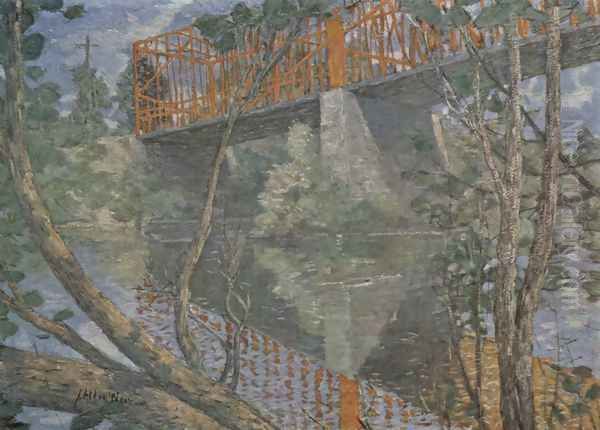
During his four years in Paris (1873-1877), Weir absorbed the vibrant artistic atmosphere. He formed crucial friendships, notably with the French naturalist painter Jules Bastien-Lepage. Bastien-Lepage's style, which combined academic precision with an objective, almost photographic depiction of rural life and subtle light effects, deeply impressed Weir. This influence offered a bridge between the strict academicism of Gérôme and the burgeoning Impressionist movement, which Weir initially viewed with skepticism.
Weir's letters from Paris reveal his initial resistance to the Impressionists, whose work he encountered firsthand. He famously described an early Impressionist exhibition featuring artists like Claude Monet and Camille Pissarro as horrifying. However, his exposure to European art was broad. He traveled to Spain, where he admired the works of Velázquez, and to the Netherlands, studying the Dutch Masters like Rembrandt and Vermeer. He also encountered the work of Édouard Manet, whose bold compositions and modern subject matter challenged academic conventions, even if Weir didn't immediately embrace his style.
The Gradual Embrace of Impressionism
Upon returning to the United States in 1877, Weir initially worked in a style that reflected his academic training and the influence of Bastien-Lepage – characterized by tonalism, careful drawing, and often featuring portraits and still lifes. He became active in the New York art scene, teaching and exhibiting. However, the seeds planted during his time in Europe, combined with evolving artistic trends in America and his friendships with other forward-thinking artists, began to shift his perspective.
A key friendship was with John Henry Twachtman, another American artist who had studied in Europe and was exploring Impressionist techniques. Their close association and shared artistic explorations were crucial. Weir also maintained connections with artists like Theodore Robinson, who had direct contact with Monet in Giverny and helped introduce French Impressionist principles to American artists. Slowly, Weir began experimenting with a brighter palette, looser brushwork, and a greater emphasis on capturing the fleeting effects of light and atmosphere, particularly in landscape painting.
This transition was not abrupt but evolutionary. By the late 1880s and early 1890s, Weir's style showed a marked departure from his earlier, more conservative work. He participated in a joint exhibition with Twachtman at the Ortgies Gallery in New York in 1889, which showcased their developing Impressionist sensibilities. While still retaining a certain structural solidity learned from his academic background, his work increasingly embraced the core tenets of Impressionism as adapted to an American context.
Mature Style: American Impressionism
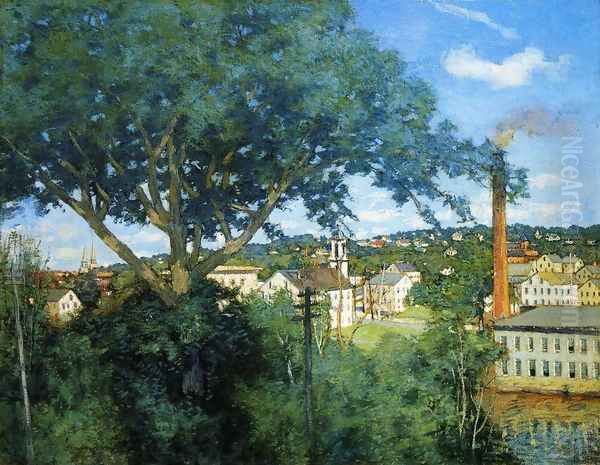
Weir's mature style is often described as a lyrical and refined form of Impressionism. Unlike some of his French counterparts, he rarely dissolved form completely into light and color. Instead, he maintained a sense of underlying structure and draftsmanship, often combined with delicate color harmonies and a sensitivity to mood and atmosphere. His palette became lighter and more varied, and his brushstrokes more visible and expressive, capturing the vibrancy of natural light.
His subject matter frequently centered on the landscapes and intimate scenes found at his farms in Branchville and Windham, Connecticut. He acquired the Branchville farm in 1882, and it became not only his home but also a vital source of artistic inspiration. He painted the rolling hills, stone walls, barns, and gardens of his property, often returning to the same motifs under different light and weather conditions. These works convey a deep connection to the American countryside, rendered with a quiet poetry.
Beyond landscapes, Weir continued to excel in portraiture and still life. His portraits often depicted family members and friends, capturing their likeness with psychological insight and a gentle intimacy. His still lifes, frequently featuring flowers or simple domestic objects, demonstrate his mastery of composition, texture, and subtle color relationships. Throughout his oeuvre, there is a consistent emphasis on craftsmanship and a refined aesthetic sensibility.
The Red Bridge: A Masterpiece
Among Weir's most celebrated works is The Red Bridge, painted around 1895. This painting depicts an iron truss bridge spanning the Shetucket River near his farm in Windham, Connecticut. The composition is striking, utilizing the strong diagonals and lattice structure of the bridge against the softer forms of the surrounding landscape and water. The vibrant red of the bridge contrasts beautifully with the cool blues and greens of the river and foliage.
The Red Bridge exemplifies Weir's unique blend of Impressionist technique and structural clarity. The brushwork is relatively loose, capturing the shimmering reflections on the water and the dappled light on the riverbanks. Yet, the bridge itself is rendered with a solidity that anchors the composition. The painting is also notable for its embrace of a modern, man-made structure within the natural landscape, a theme explored by several Impressionists. Acquired by the Metropolitan Museum of Art, The Red Bridge remains an iconic image of American Impressionism and a testament to Weir's artistic vision.
Weir Farm: An Artistic Haven
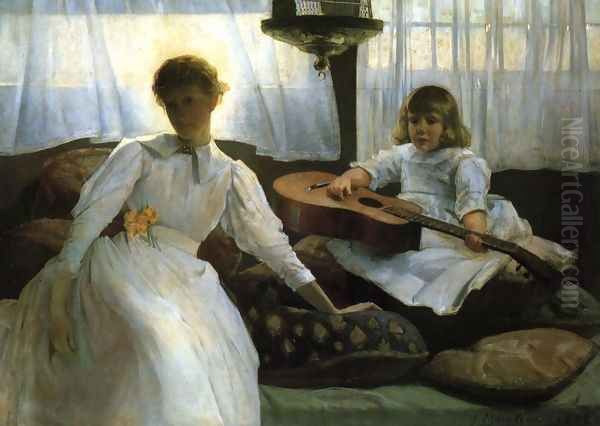
Weir's farm in Branchville, Connecticut, was more than just a home and painting location; it became a significant gathering place for artists. Weir was known for his hospitality and enjoyed the company of fellow painters, writers, and intellectuals. He frequently invited friends to stay, work, and exchange ideas in the idyllic rural setting. The farm fostered a sense of community and creative cross-pollination among leading figures in American art.
Among the notable artists who visited and worked at Weir Farm were John Henry Twachtman, Childe Hassam, Albert Pinkham Ryder, John Singer Sargent, and William Merritt Chase. These gatherings allowed for informal discussions about art, mutual critiques, and shared painting sessions outdoors (plein air). The landscape itself, shaped and painted by Weir, became a collaborative subject. The creative energy of the farm contributed significantly to the development of American Impressionism.
Recognizing its historical and cultural significance, Weir Farm was designated a National Historic Site in 1990, the only National Park Service unit dedicated to American painting. It preserves the landscape, studios, and home that inspired Weir and his circle, offering visitors insight into this important chapter of American art history. The legacy of Weir Farm underscores the importance of place in Weir's life and art.
Leadership in Artistic Organizations
Julian Alden Weir was not only a dedicated painter but also an active participant and leader in the major art organizations of his time. His involvement reflects his commitment to advancing American art and supporting fellow artists, though it sometimes placed him amidst the institutional politics and stylistic debates of the era.
He was a founding member of the Society of American Artists (SAA) in 1877. The SAA was formed by younger artists, many trained in Europe like Weir, who felt the National Academy of Design was too conservative and resistant to new styles. The SAA provided an alternative venue for exhibiting more progressive work. Weir remained involved with the SAA and later served as its president from 1915 to 1917, ironically after the SAA had merged back with the National Academy.
Weir was also associated with the Tile Club, an informal group of artists and writers active in the late 1870s and 1880s, known for their camaraderie and decorative work, particularly painting on ceramic tiles. Members included notable figures like Winslow Homer, William Merritt Chase, and Stanford White. This affiliation highlights Weir's engagement with the broader artistic and social circles of New York.
The Ten American Painters
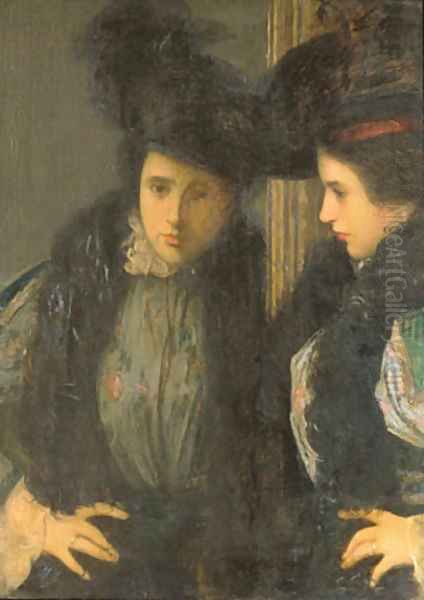
Perhaps Weir's most significant organizational role was as a founding member of "The Ten American Painters," often simply called "The Ten." Formed in the winter of 1897-1898, this group seceded from the Society of American Artists, ironically citing dissatisfaction with the SAA's large, crowded exhibitions and perceived lowering of standards – mirroring the reasons the SAA had originally split from the NAD.
The Ten comprised Weir, Childe Hassam, John Henry Twachtman, Robert Reid, Willard Metcalf, Frank W. Benson, Edmund C. Tarbell, Thomas W. Dewing, Joseph DeCamp, and Edward Simmons (later replaced by William Merritt Chase after Twachtman's death). They aimed to exhibit their work in smaller, more harmonious settings, allowing their Impressionist-influenced styles to be seen to better advantage. The group held annual exhibitions for twenty years, becoming synonymous with American Impressionism, although their styles varied individually. Weir's participation solidified his position as a leading figure in the movement.
Involvement with the National Academy and the Armory Show
Despite his involvement with breakaway groups like the SAA and The Ten, Weir also maintained ties with the established National Academy of Design. He was elected an associate member in 1885 and a full academician in 1886. His relationship with the Academy culminated in his election as its president in 1915, succeeding John White Alexander. However, his tenure was relatively brief, ending in 1917. Some accounts suggest his progressive leanings sometimes clashed with the more conservative elements within the Academy.
Weir also played a role in the Association of American Painters and Sculptors (AAPS), serving briefly as its president in 1912. This organization was responsible for organizing the landmark 1913 Armory Show (officially the International Exhibition of Modern Art) in New York City. This exhibition introduced large audiences in America to European avant-garde movements like Fauvism and Cubism, featuring works by artists such as Henri Matisse, Pablo Picasso, and Marcel Duchamp. While Weir himself represented a more established, Impressionist style, his initial involvement with the AAPS placed him at the crossroads of American art as it confronted European modernism. The radical nature of the art shown at the Armory Show ultimately proved challenging for many artists of Weir's generation.
Teaching and Lasting Influence
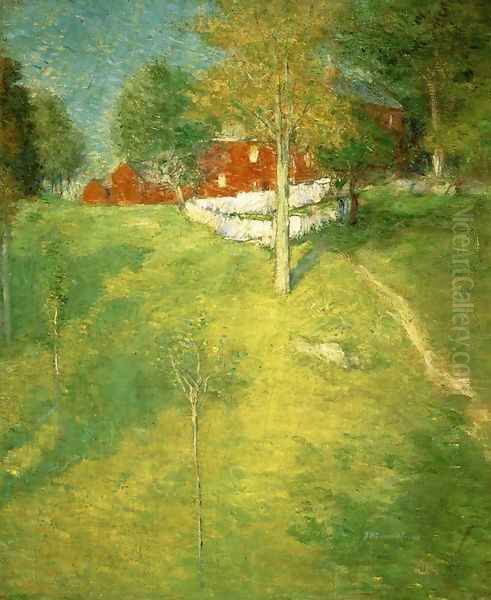
Throughout his career, Weir was dedicated to art education. He taught at various institutions, including the Cooper Union School of Art for Women and notably at the Art Students League of New York. The Art Students League, itself founded in opposition to the NAD's teaching methods, was an important center for progressive art education. Weir taught alongside figures like Lemuel Wilmarth, and his students benefited from his blend of academic rigor and openness to newer ideas.
His influence extended beyond his direct students. Through his work, his leadership in organizations, and his role as a mentor and friend to many artists, Weir helped shape the landscape of American art. He championed Impressionism, yet his version remained grounded in careful observation and craftsmanship, offering a model that resonated with many American artists and collectors. He also played a role in advising collectors and promoting the acquisition of European art, including works by his friend Bastien-Lepage and even early acquisitions of works by Edgar Degas.
Later Life and Legacy
Julian Alden Weir continued to paint actively into the early 20th century, dividing his time between New York City and his Connecticut farms. His later work maintained the high quality and distinctive style he had developed, though like many Impressionists, he explored different themes and techniques throughout his life, including etching. He received numerous awards and honors during his lifetime, recognizing his contributions to American art.
He passed away in New York City on December 8, 1919. His legacy endures through his beautiful and sensitive paintings, which are held in major museums across the United States, including the Metropolitan Museum of Art, the National Gallery of Art, the Phillips Collection, and the Smithsonian American Art Museum. His farm in Branchville, preserved as the Weir Farm National Historic Site, serves as a living testament to his life, his art, and his role in fostering a community of artists.
Julian Alden Weir remains a key figure in understanding the development of American Impressionism. He navigated the complex transition from 19th-century academicism to early 20th-century modernism, forging a unique style that captured the beauty of the American landscape and the nuances of light and atmosphere. His work, combined with his significant role as a teacher, mentor, and organizer, secures his place as one of the most important American artists of his generation. His art continues to be appreciated for its technical skill, aesthetic refinement, and evocative portrayal of a bygone era.